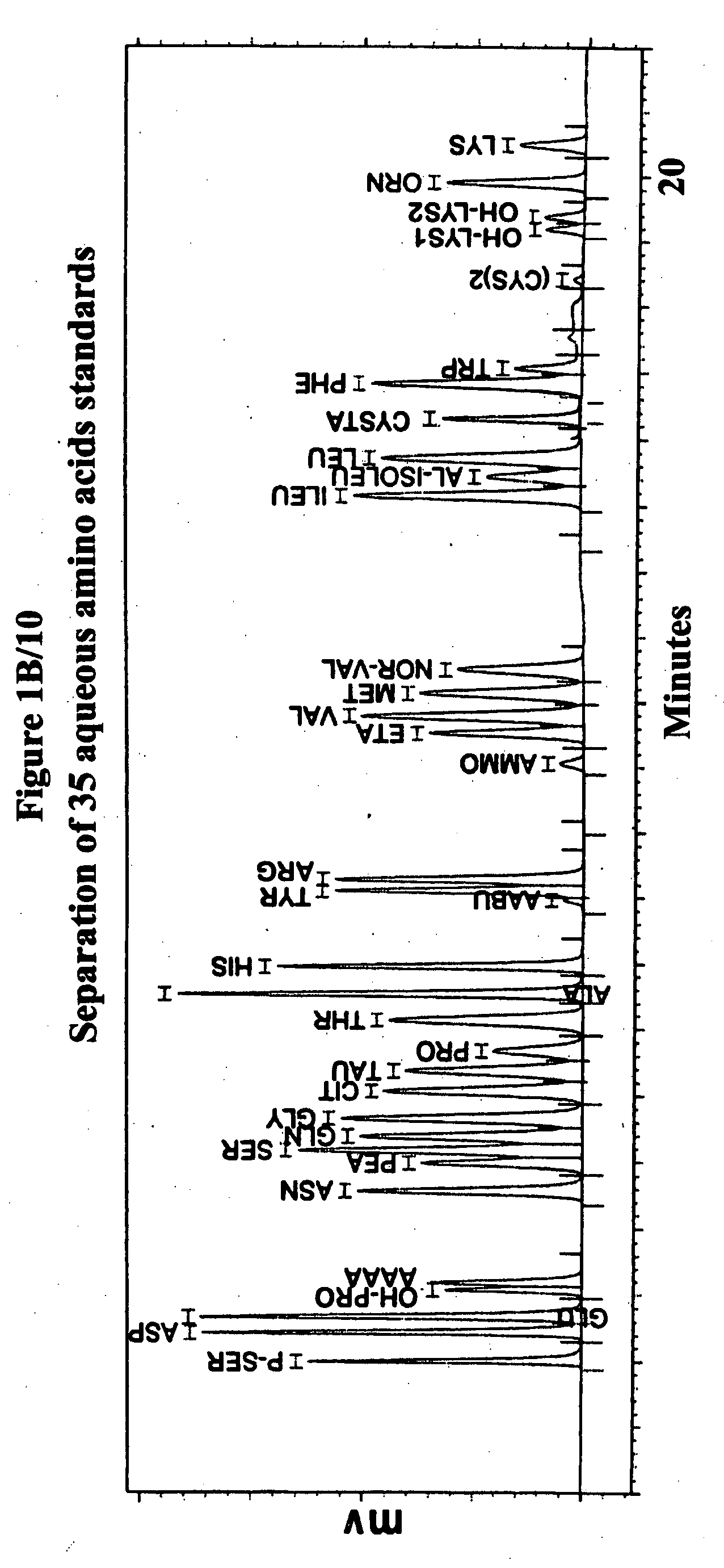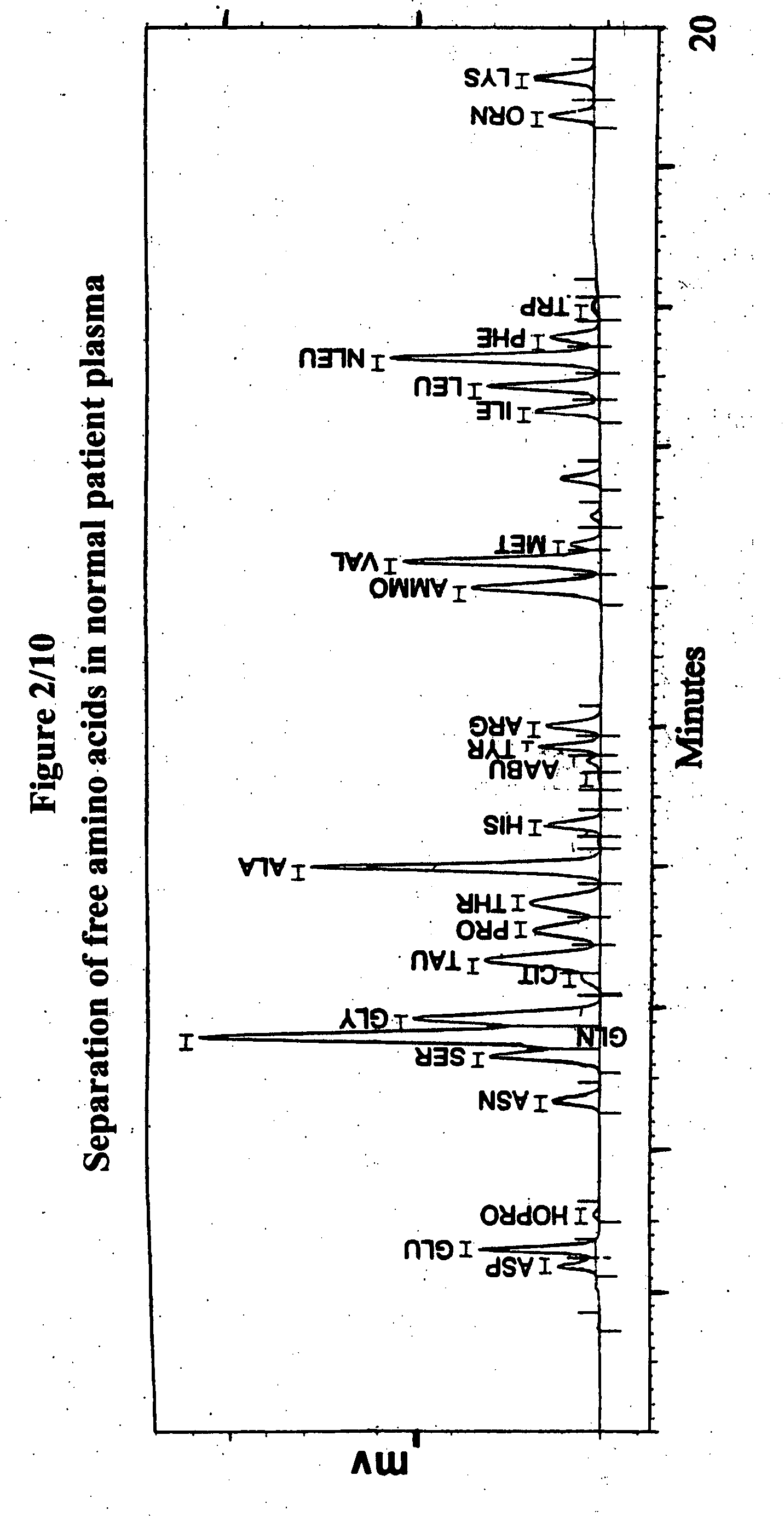Human plasma free amino acids profile using pre-column derivatizing reagent- 1-naphthylisocyanate and high performance liquid chromatographic method
a derivatization reagent and human plasma technology, applied in the field of human plasma free amino acid profile using pre-column derivatization reagent1naphthylisocyanate and high-performance liquid chromatographic method, can solve the problems of poor clinical use of derivatization, insufficient clinical amino acid analysis of biological samples, and insufficient derivatization. comprehensive, sophisticated instrumentation and high cos
- Summary
- Abstract
- Description
- Claims
- Application Information
AI Technical Summary
Benefits of technology
Problems solved by technology
Method used
Image
Examples
Embodiment Construction
Experimental Details for the Analysis of Free Amino Acids in Human Plasma Samples Using 1-Naphthylisocyanate
Materials
[0005] Sodium dihydrogen phosphate, Sodium Hydroxide, Boric acid, Perchloric acid, Tris(carboxy ethylphosphine Hydrochloride), HPLC solvents acetonitrile, methanol, and water and Sodium heptane sulfonate were purchased from Fisher Scientific, Fair Lawn N.J. Amino acid standards (solids) were obtained from Sigma, St Louis, Mo.
Preparation OF Reagents
[0006] 1.0 M Borate buffer was prepared from boric acid and the pH was adjusted to 6.25 using sodium hydroxide solution.
[0007] Amino acid Standard: 400 μM / L standard was prepared by dissolving 0.1 mM amount of each amino acid (except—Homocystine and Cystine—only 0.05mM) were weighed and transferred to a 250 ml beaker, The amino acids were dissolved using minimum amount of 1M Sodium hydroxide solution and neutralized (using a pH meter and 1M hydrochloric acid solution). The neutral solution was transferred quantitatively...
PUM
 Login to View More
Login to View More Abstract
Description
Claims
Application Information
 Login to View More
Login to View More - R&D
- Intellectual Property
- Life Sciences
- Materials
- Tech Scout
- Unparalleled Data Quality
- Higher Quality Content
- 60% Fewer Hallucinations
Browse by: Latest US Patents, China's latest patents, Technical Efficacy Thesaurus, Application Domain, Technology Topic, Popular Technical Reports.
© 2025 PatSnap. All rights reserved.Legal|Privacy policy|Modern Slavery Act Transparency Statement|Sitemap|About US| Contact US: help@patsnap.com



